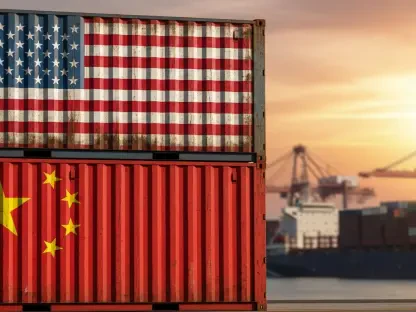In a world where trade tensions often dominate headlines, the recently formalized trade agreement between the United States and South Korea stands as a beacon of strategic cooperation, promising to redefine economic relationships on a global scale. This pact, finalized after months of intensive negotiations, goes beyond mere tariff adjustments to establish a framework of mutual investment and market access that could influence trade policies far beyond the borders of these two nations. With commitments to cap tariffs, ease restrictions on key industries, and channel significant investments into critical sectors, the agreement signals a shift toward balancing national interests with international collaboration. As global markets grapple with uncertainty, this deal offers a glimpse into how bilateral agreements might serve as a counterweight to broader trade disputes, potentially setting a precedent for future negotiations. The implications of such a comprehensive pact warrant a closer look at how it might ripple through the international economic landscape.
Tariff Reforms and Market Access Innovations
The cornerstone of this landmark trade agreement lies in its approach to tariff limitations and market access reforms, which aim to create a more predictable and equitable trading environment. Under the terms, the United States has pledged to cap tariffs on South Korean imports at 15%, covering a diverse array of goods such as automobiles, auto parts, and timber products. This cap ensures that even if additional sector-specific levies are introduced, the cumulative burden on South Korean exporters remains manageable, fostering stability in their trade planning. Meanwhile, South Korea has reciprocated by lifting a restrictive 50,000-unit cap on U.S. vehicles that meet American safety standards, thereby eliminating redundant inspections and streamlining entry into its market. These measures reflect a deliberate effort to dismantle barriers that have long hindered smoother trade flows, prioritizing efficiency and fairness in bilateral commerce.
Beyond immediate tariff adjustments, the agreement tackles non-tariff barriers that have historically complicated trade, particularly in the agricultural and food sectors. South Korea’s commitment to addressing these obstacles paves the way for enhanced access for U.S. products, potentially boosting American exports in a competitive market. At the same time, the U.S. has outlined protections for sensitive industries like pharmaceuticals and semiconductors by ensuring that any future tariffs on South Korean goods in these areas do not exceed the agreed-upon 15% limit. Additionally, plans to eliminate tariffs on specific items, such as generic drugs and certain natural resources unavailable domestically, underscore a nuanced strategy that balances protectionism with the need for economic interdependence. These provisions not only strengthen ties between the two countries but also hint at a model that could inspire similar reforms in other global trade negotiations, emphasizing mutual benefit over unilateral gain.
Strategic Investments and Economic Synergy
Another pivotal aspect of this trade pact is South Korea’s substantial investment pledge, which underscores the agreement’s focus on long-term economic synergy rather than short-term transactional benefits. A staggering $350 billion commitment to the U.S. economy includes $150 billion specifically directed toward the American shipbuilding industry, a sector critical to national security and economic vitality. The remaining $200 billion, while not yet detailed in public disclosures, is earmarked for other strategic areas, suggesting a broad intent to bolster key industries through foreign capital. This infusion of funds represents more than just financial support; it signals a deepening partnership aimed at job creation and industrial growth, positioning the U.S. as a prime destination for South Korean investment. Such a move could encourage other nations to pursue similar investment-driven trade deals, reshaping global economic alliances.
The investment component also highlights a growing trend in international trade agreements where capital commitments play as significant a role as tariff negotiations. By securing such a massive financial pledge, the U.S. not only gains economic leverage but also reinforces its industrial base at a time when global supply chains face unprecedented disruptions. For South Korea, this investment offers a foothold in the American market, ensuring long-term returns and a stronger industrial presence abroad. This dual benefit illustrates how trade pacts can transcend traditional commerce to foster deeper economic integration, potentially influencing how other countries structure their agreements. As global trade increasingly intertwines with investment strategies, this deal may serve as a blueprint for leveraging financial commitments to secure competitive advantages, prompting a reevaluation of what constitutes a successful trade partnership in today’s interconnected economy.
Implications for the Global Trade Landscape
The broader implications of this agreement extend well beyond the immediate benefits for the United States and South Korea, offering a potential template for navigating the complexities of global trade. By establishing clear tariff caps and reciprocal market access concessions, the pact mitigates the risk of escalating trade disputes that often destabilize international markets. It demonstrates a pragmatic approach where both parties prioritize economic stability over short-term protectionist gains, a stance that could encourage other nations to adopt similar frameworks in their trade negotiations. Moreover, the focus on critical sectors like semiconductors and pharmaceuticals addresses emerging challenges in global supply chains, suggesting that future agreements might need to incorporate specific provisions for high-stakes industries to ensure resilience against geopolitical and economic shocks.
Looking at the global stage, this trade deal could act as a counterbalance to ongoing tensions among major economic powers, providing a model of cooperation amid widespread uncertainty. The balance struck between protecting national interests and fostering open markets may inspire a shift in how countries approach bilateral and multilateral trade talks, particularly in regions where trade barriers remain a significant hurdle. South Korea’s significant investment in the U.S. also raises the possibility that economic partnerships will increasingly hinge on mutual financial stakes, altering the dynamics of trade diplomacy. As nations observe the outcomes of this agreement, there is potential for a ripple effect, where the principles of tariff predictability, market openness, and strategic investment become central to crafting policies that support a more stable and collaborative global trading system.
Building on a Foundation of Collaboration
Reflecting on the journey of this trade pact, the meticulous negotiations and mutual concessions that defined its development highlight a shared commitment to economic progress over discord. The finalized agreement stands as a testament to the power of dialogue in resolving complex trade issues, with both nations navigating sensitive topics like tariff limits and market access with a focus on fairness. The substantial investments pledged by South Korea further cement a partnership that looks beyond immediate gains to long-term stability. As the provisions take effect, they offer a glimpse into a future where trade disputes are tempered by structured agreements. Moving forward, stakeholders should consider how to build on this foundation by advocating for transparency in trade policies, encouraging similar pacts with other nations, and continuously monitoring the impact of such deals on global markets to ensure they adapt to evolving economic realities.









